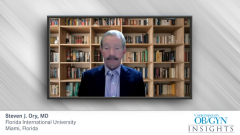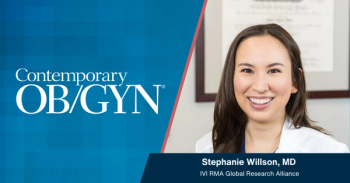
Role of GnRH Agonists and Antagonists in Controlled Ovarian Stimulation (COS) in IVF
Steven J. Ory, MD, discusses controlled ovarian stimulation (COS) and the use of a gonadotropin-releasing hormone (GnRH) agonist or antagonist as an important step in the IVF process.
Steven J. Ory, MD: The success of IVF [in vitro fertilization] is usually most dependent on finding a competent egg. Many of the resulting embryos are not normal, and the majority of the time the abnormality becomes from the oocyte. There may be newborn error of myosis. The strategy of coming up with many oocytes to work with is critical to improve the chance of finding a competent oocyte. This is where controlled ovarian stimulation, previously referred to as controlled ovarian hyperstimulation, comes in. For a woman with average or better-than-average ovarian reserve, gonadotropins are preferred for this because they typically induce multiple follicles to develop. For women with a diminished ovarian reserve, gonadotropins are often used as a first-line strategy, but they’re considerably less successful. These drugs typically lead to the production of 8 to 12 mature oocytes, sometimes a number greatly in excess of that. Sometimes we’re lucky to recover 1 or 2 oocytes.
One of the challenges when we’re utilizing controlled ovarian stimulation is to prevent premature ovulation. Normally, ovulation occurs and is accomplished by an LH [luteinizing hormone] surge when a certain threshold of estradiol produced by the developing follicles is exceeded. When that threshold is hit, there’s an LH surge. With multiple follicles developing at the same time, that threshold is hit at a much earlier point than when the follicles are likely to be mature. To prevent that from happening, we use GNRH agonist or antagonist. GNRH is a 10-amino acid peptide released from the median imminence of the hypothalamus, and it accomplishes release of follicle-stimulating hormone [FSH], which is the most critical hormone for maturation of the follicles but also luteinizing hormone. The control of LH is a little different, but both of them are important for follicular development, FSHmore so.
By making a couple of substitutions in that 10-amino acid compound, we can create an agonist, which was the first developed GNRH analog. Agonists bind to the GNRH receptor, so that initially there’s a blast of FSH and LH. After 14 to 20 days, downregulation ensues, and the LH and FSH production drop and essentially return the pituitary to a prepubertal state with essentially no significant gonadotropin production. The other substitution can produce an antagonist. Antagonists also bind to the GNRH receptors, but the downregulation is immediate. There’s no agonist effect with an excess of gonadotropin produced with the antagonist LH, and FSH production is ablated pretty much immediately.
Both GNRH agonists and antagonists are used in IVF to permit that premature LH surge. A number of studies have compared the efficacy of each of them. There’s no clear consensus in terms of which 1 is better. For the most part, most programs prefer GNRH antagonists for the ease of use. There’s a shorter duration of injections. The agonists are typically started in the previous cycle to allow for the downregulation to occur. There are more shots, and it’s also more expensive. Many patients prefer that. However, there appears to be a small group of patients that do much better, at least in terms of their oocyte quality, with the long agonist protocols. We see this sometimes in women with polycystic ovary syndrome who produce poor-quality oocytes with the agonist. Switching them to an antagonist protocol, we often see a significant difference in oocyte quality.
The success rate of IVF is probably most dependent on the woman’s age. Specifically, it’s dependent on the likelihood of producing a euploid embryo. Because the proportion of normal oocytes declines with age, the paradox is that as women grow older, we need more oocytes to have a good chance of finding a normal 1. If we find a euploid oocyte in a 45-year-old and we can determine from preimplantation genetic testing for aneuploid that that’s a normal embryo, then that 45-year-old has the same chance of success as a 30-year-old. But the likelihood of finding that normal embryo without genetic testing declines with age. For women younger than 35 there is a 50% chance of success. Some IVF clinics consistently have success rates greater than 60% in that age group. For women over age 42, that number typically declines to less than 5%, purely as a result of the decline in that quality.
Transcript edited for clarity
Newsletter
Get the latest clinical updates, case studies, and expert commentary in obstetric and gynecologic care. Sign up now to stay informed.










